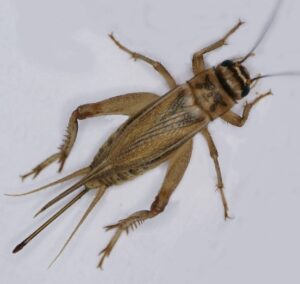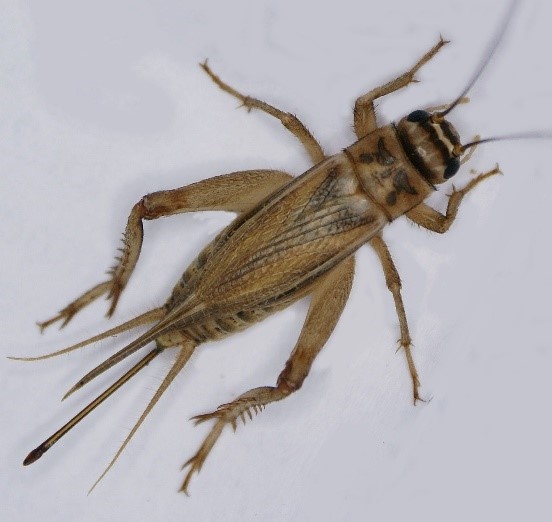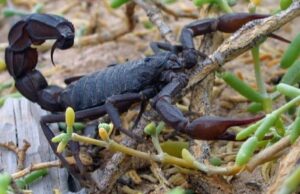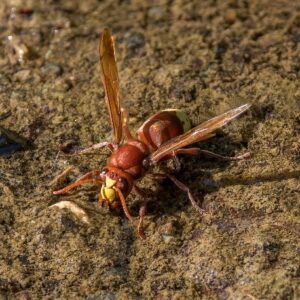Crickets:
House Cricket
General Description
| · Adults are 1.7-2.3 cm in length, with long, thin antennae that is longer than the body. The body is light yellowish brown, with three dark bands on the head. The wings lie flat on its back.
· Nymphs are 16-21 mm in length. The body is gray or brownish in color, and wingless but otherwise look similar to adults. · Males and females look similar, but females will have a needle from the rear, around 1.2 cm long. |

House Cricket – Credit:Geyersberg
|
- The ovipositor is brown-black, and is surrounded by two appendages.
- On males, the cerci are also more prominent.
Life Cycle and Common Characteristics
- Eggs are deposited in damp substrate if available.
- Nymphs resemble the adults except for being smaller and wingless.
- Adults take two to three months to complete their life cycle.
- They have no special overwintering stage, but can survive cold weather in and around buildings, and in dumps where heat from fermentation may sustain them.
- This cricket is active at night, usually remaining hidden during the day.
- They live outdoors but may invade houses in great numbers.
Damages and Economic & Medical Implications
- They are omnivorous, eating or drinking almost anything that is available.
- In households, they may chew on or damage silk, woollens, paper, fruits, and
- Outdoors, they consume flowers, seeds, leaves, fruits, grasses, and other insects
us insects feed on anything from plants to paper to clothing.




